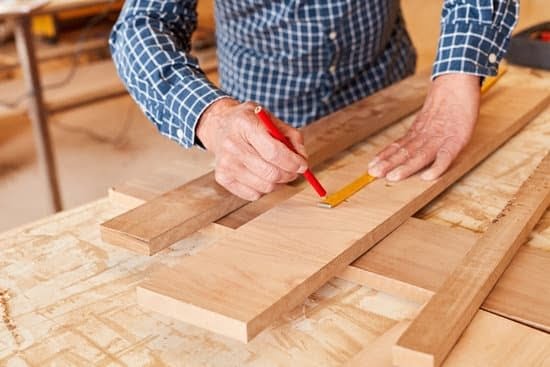Introduction
Green woodworking is an ancient practice that dates back to pre-industrial Europe and even earlier civilizations. In the past, it was a common way to create tools and objects out of trees, as well as a way of passing knowledge through the generations. Throughout history, people have used green woodworking techniques such as steam bending, shaping with axes, and fire to craft useful items like wooden bowls and furniture.
Green woodworking is based on an appreciation for natural materials and takes an environmental approach to preserving resources by utilising harvested trees. It involves harvesting timber soon after it has been cut down, allowing the green wood to be worked with standard hand-held tools while in its raw state. This process avoids the lengthy drying process necessary for other methods of woodworking, which can cause shrinkage or warping of the material. Additionally, green wood can usually be worked quicker due to its pliability when compared with dry timber.
One popular form of greenwoodworking is called coppicing, which involves cutting at the base of a tree so it will regrow thickly from this point with multiple shoots or stems each season. This technique is often followed after a regulated interval to ensure healthy new growth and continued sustainable harvest over time . By using this method of replenishment harvesting only what is needed whilst avoiding felling whole trees every time timber requires processing.
Benefits of Green Woodworking for Your Home
Green woodworking is an environmentally friendly approach to traditional woodworking that uses harvested or naturally found materials. It focuses on the use of sustainable and renewable sources like locally-sourced timber, dead trees, and recently fallen branches. It also prioritizes the idea of keeping wood in its original form as much as possible, such as leaving bark on a piece of lumber instead of stripping it off. This form of woodworking can be used to create furniture, art pieces, tools and more.
The benefits of green woodworking for your home can include improvements to air quality due to fewer chemicals used to process the materials for crafting, reduced amounts of pollution created from gas-powered tools, and improved comfort due to implementing traditional hand tools rather than noisy power equipment. Green woodworking also supports local production by utilizing locally-sourced materials which promotes jobs in the local economy and reduces reliance on shipped resources from far away locations. Additionally, using natural products from green woodworking increases the aesthetic beauty behind wooden furnishings as unique grain patterns and texture add character not found with other materials. Finally, using untreated natural materials contributes less to landfills when disposed as these pieces can actually be burned without polluting the environment with noxious chemicals like treated parts would do when burned.
Types of Sustainable Wood Suitable for Green Woodworking
Green woodworking is a form of woodworking where sustainable material is used, such as recently felled trees, wind-fallen branches, and coppiced stems. The practice comes from ancient medieval techniques that traditionally involved working with greenwood that was still full of sap, often harvested from the forest floor or nearby woodland area. This was done to make furniture, musical instruments and other objects from their natural resources.
Today’s modern green woodworking technique integrates an ecologically aware approach to traditional joinery. The furniture that comes from this process is not only aesthetically pleasing, but also endures for generations thanks to deep jointing techniques and careful protection of the timber during the working process.
Types of sustainable wood suitable for green woodworking include hardwoods like English oak, beech or walnut; younger softwoods like ash, birch or elm; and even re-used wood such as reclaimed pallet boards or recycled floorboards. Some materials may need to be dried through different processes before they can be worked into the desired object. These processes might include air drying the logs together in piles (known as ‘stacks’), splitting the logs into individual planks before seasoning them in sheds and outdoor spaces where the sun and wind will help dry them out naturally, or kiln drying them in large industrial ovens in order to expedite the process. Traditional green woodsman would also utilize ancient preservation techniques such as charring and smoking new planks as part of their craft – a method still practiced today by a select few artisans!
Necessary Tools for Successful Green Woodworking
Green woodworking is the practice of using freshly-cut, unseasoned wood to form and craft items such as furniture, tools, and coverings. Green woodworking refers to working with wet or unseasoned timber that has a high moisture content. This means that the wood needs time to correctly dry before it can be properly used in a build.
Necessary tools for successful green woodworking include saws, axes, chisels, planes, forging tools, drawknives and spokeshaves. A saw can be used to form cuts in newly felled logs before further processing them with an axe or adze. Chisels are useful for accurately cutting out joint mortices so wooden objects can be joined together. Planes help to provide an even surface finish and smooth away excess material from pieces of timber. Drawknives and spokeshaves enable smooth curves to be formed on round logs or timber shafts. Finally, forges should always be used when doing any metal work associated with green woodworking projects such as making hinges or nails which need to securely hold things in place.
Tips on Getting Started with Green Woodworking
Green woodworking is a craft or trade that uses unseasoned, or newly cut, wood to create handmade pieces of furniture. By using green wood rather than seasoned, or dried, lumber, craftsmen are able to produce high-quality items that are structurally sound and able to survive environmental changes.
If you’re interested in getting started with green woodworking, here are some tips to help you out:
1. Know Your Wood – Before you can get started with your project, it’s important to understand the characteristics of different types of timber so you can identify which type is suitable for your project.
2. Find a Supplier – Make sure you have access to a reliable source for fresh timber; look for local sawmills that can provide freshly cut and unseasoned wood.
3. Have the Right Tools – You will need a variety of tools including saws, chisels, hand planes, carving knives and gouges ” as well as various adhesives and fasteners. Investing in quality tools will make your projects easier and more enjoyable.
4. Learn Proper Techniques – Take the time to learn the correct techniques such as how to joint edges correctly or how to safely use tools before starting any projects with green woodwork.
5. Start Simple – As with any type of working with wood, start off by selecting simple projects like small furniture pieces or kitchen utensils like spoons and spatulas before moving onto larger items such as chairs and tables.
Eco-Friendly Finishing Techniques for Projects
Green woodworking is a term used to describe an environmentally conscious approach to woodworking and crafting. It focuses on finding ways to reduce the environmental impact during all stages of the woodworking process, including building, finishing, and disposal. The idea is to create projects using natural materials such as wood, stone, cotton, and other non-toxic elements as much as possible. Additionally, it involves searching for eco-friendly alternatives to traditional finishes and varnishes such as toxin-free waxes or linseed oil.
Part of green woodworking includes understanding that sourcing any form of natural material has an impact on a large scale level. Conserving forests is important in the craft; shopping locally whenever possible helps local artisans while simultaneously supporting their community’s economy. Furthermore, the use of sustainable practices should be looked at whenever possible. For example, using salvaged wood helps lessen strain on trees and keeps them out of landfills.
The idea behind green woodworking is that modern technological advances aren’t necessarily better than traditional methods in terms of creating functional products that look great despite limited resources or budgets. Craftspersons can still use hand tools like chisels and saws – they just need to consider health factors while they work. When choosing finishes or protective coatings for the project, experts suggest looking for options made from animal or vegetable sources that don’t contain harmful chemicals like formaldehyde and VOCs (Volatile Organic Compounds). Other techniques include selecting eco-friendly stains with low odor levels rather than synthetic ones with volatile chemical components which can emit dangerous fumes when exposed to high temperatures such as those occurring during certain finishing processes. Additionally, it’s also crucial you select low VOC glues when joining pieces together for your project to further reduce harm brought about by toxins in the atmosphere. Green woodworking is ultimately about making intentional choices regarding anything related to our projects so we don’t unknowingly contribute more pollutant chemicals into our environment by not doing so
Innovations in Green Woodworking
Green woodworking is a way of working with green, unseasoned wood to craft items by hand. It involves shaping raw material closer to its natural state, before the drying and hardening process sets it permanently in shape. Green woodworking requires less energy than traditional methods as there is no need for machines or heavy machinery. Instead, tools such as axes, chisels, drawknives and spokeshaves are used to carve, bend and shape the wood by hand – a skill which takes time and patience to master.
New innovations in green woodworking range from using biodegradable water-based paints and glues instead of toxic chemicals, utilizing salvaged materials instead of virgin timber, making furniture out of granite slabs or woven willow instead of hardwood boards and encouraging reusing used parts for furniture repair. The use of natural materials such as stone or metal also allows for longer lasting pieces rather than using plywood which can break down over time when exposed to moisture. Reusing such natural products helps keeps them from being put into landfill sites as it eliminates the need for purchasing new stock for projects. Additionally, some modern techniques even use reclaimed plastic-based composites that look just like timber but require far fewer resources to produce than solid woods.
Common Challenges and Solutions for Green Woodworking
Green woodworking refers to the practice of utilizing harvested lumber and materials in a way that best preserves their natural properties and resources. This includes methods such as air drying, kiln drying, and properly treating wood against rot. Common challenges facing green woodworkers include contamination from sap, mold, pests, and rust. Solutions for these issues include using certain finish oils or sealers that can act as a barrier against contamination; ensuring proper ventilation when storing lumber; controlling moisture levels with dehumidifiers; storing lumber away from damp areas; using pest deterrents to keep insects away; inspecting the lumber prior to use to identify any irregularities; and avoiding placing pressure on a wet piece of wood, which could cause cracking or warping.
Summary
Green woodworking is a new form of woodworking that focuses on using environmentally-friendly techniques, materials and tools. It is based on the idea of having a minimal impact on the environment by using natural resources and preserving traditional woodworking values. This type of woodworking includes using renewable resources for materials and choosing techniques and tools that reduce energy consumption, waste production and emissions. The goal is to create objects from responsibly harvested forests that are aesthetically pleasing and render a lasting value.
One of the strengths of going green with woodworking is its sound environmental practices regarding renewable energy sources, reusing existing materials, reducing waste production and preventing pollution. Using these methods preserves forests while also helping reduce climate change as trees are responsible for absorbing carbon dioxide from the atmosphere. Additionally, it conserves water sources used in harvesting trees as well as cuts down on chemicals used in treating lumber to be used for furniture making or interior décor construction.
On the other hand, one of the weaknesses with green woodworking is its possible high costs due to initial investments in specialized tools required; it may not be feasible or cost-effective in areas with no access to renewable energy sources either due to geographic limitations or electricity costs; and businesses that offer green woodworking will have to focus on marketing their products differently from those produced by conventional methods as there tends to be less demand for this type of product due to prices being higher than standard pieces sold in large retailers.

Hi everyone! I’m a woodworker and blogger, and this is my woodworking blog. In my blog, I share tips and tricks for woodworkers of all skill levels, as well as project ideas that you can try yourself.





